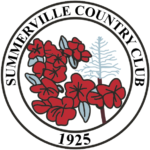History
The Course
Following World War II, the Summerville area sprang back to life. George “Chick” Miler purchased the property and the course re-opened as a nine hole course. The current back nine was designed and built in 1958 by Eddie Ricobonni and “Chick” Miler.
Meanwhile, the surrounding property was developed into Tea Farm subdivision. In the early 1960’s the tea plants were sold and transported to the Charleston Tea Plantation and the American Classic brand was born. The removal of the tea plants not only saved a valuable piece of history, it also opened the door to a new section of development within the subdivision.
In 1970, Bufort Blanton bought the club and his family has owned and operated the club ever since. One of the main attractions of the club is the family atmosphere and southern hospitality that the Blanton family has cultivated over the past 45 years.
The course utilizes four sets of tees ranging from slightly under 5000 yards to over 6000 yards. The course weaves its way through hundreds of beautiful pines that line the fairways. The design and length of the course allows players of all ability levels to enjoy the course. And like many courses built in the 1920’s it is relatively easy to walk as the distance between the greens and tees is minimal. The greens are still small and challenging and now feature Champion Bermuda Dwarf grass. For good players, “It is a golf course you can play where you can still shoot scores you used to shoot when you thought you were good.” Meanwhile for beginners it: “Provides a good challenge, but not so severe that it scares you away.”
On Memorial Day weekend the course annually hosts the Chick Miler Invitational which has been one of the top amateur golf tournaments in the region for the past 42 years.
While the course is open to the public, information about memberships can be found here.
The club’s Candlelite Pavilion serves as an excellent venue for parties, weddings and events. Click for more information.
Like its predecessor of over a century ago, Summerville Country Club remains a wonderful place to recreate, relax and rejuvenate.
The Pinehurst Tea Farm
Summerville has long been recognized for its healing climate and as a sanctuary from disease. The town founded in the 1790’s as a summer retreat for plantation owners escaping the sweltering heat and malaria. Its location, 20 miles inland from the Charleston course, allowed the thick forests of pines to serve as a buffer from the heat while its elevation allowed to still catch sea breezes.
In the late 1880’s, the first International Tuberculosis Congress in Paris named Summerville as one of the healthiest places on the planet to live. The pine-laden atmosphere was considered beneficial not only for the treatment of pulmonary problems, but also for conditions such as asthma, insomnia and nervousness. Soon after, the area became a premier resort and spa destination. Not only did it provide an excellent place for patients to recover, but with its natural beauty and serenity it also became a popular location to escape the harsh winters of the Northeast.
In 1888 philanthropist and scientist Dr. Charles Shepard acquired 600 acres of Newington Plantation and established the Pinehurst Tea Plantation. He cultivated 100 acres with tea plants. The soil and climate proved to be the perfect location to grow tea in America. Many visitors, including President Theodore Roosevelt, came to see the tea experiments, but also to revel in the beauty of the surrounding property that featured hundreds of varieties of camellias, azaleas, roses, hydrangeas and tea olives. In 1904 Pinehurst’s Oolong Tea claimed first price at the World’s Fair in St. Louis. Dr. Shepard continued to create award winning teas until his death in 1915. Four years later the tea factory burned in a fire and Shepard’s heirs sold the property.
In the early 1920’s a portion of the surrounding property was transformed into The Summerville Club. The club opened in 1925 and featured two 18 hole courses and a 9 hole par 3 course, as well as a horse race track. The designer was clearly familiar with the Country Club of Charleston and Yeamans Hall as the course shares design characteristics such as false fronts and sharp rear drop offs on the greens. It is rumored that the club featured some of the first grass-covered greens.
Unfortunately, the depression and World War II hit the Summerville Community very hard and when the Golden Age of Summerville came to an end, the golf course closed and the 100 acres of tea plants were allowed to grow wild for decades.
– Rich O’Brien
